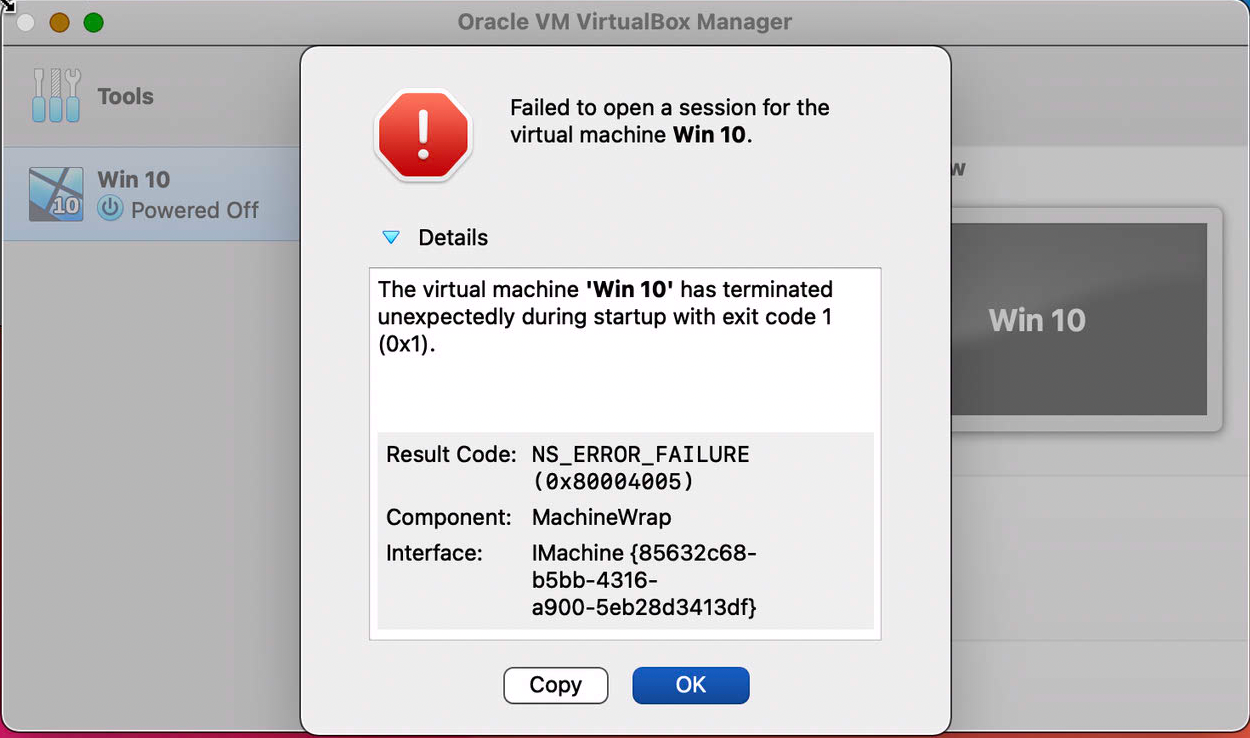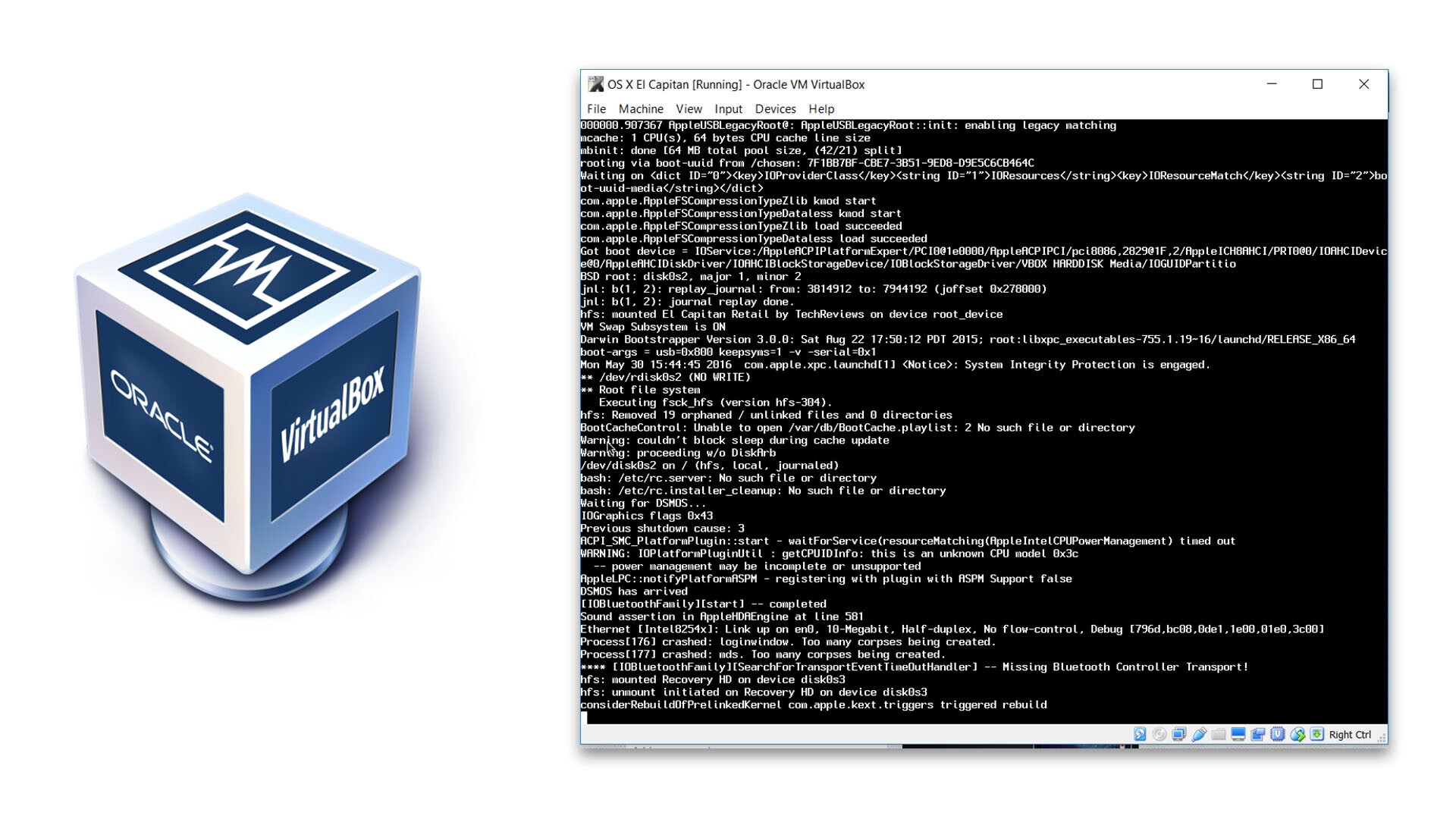
- #Using command prompt to install mac os in virtualbox how to#
- #Using command prompt to install mac os in virtualbox update#
- #Using command prompt to install mac os in virtualbox mac#
- #Using command prompt to install mac os in virtualbox windows#
#Using command prompt to install mac os in virtualbox mac#
If you use Mac OS, the procedure is almost exactly the same. It uses a slightly different version of Windows, but that should be close enough: Just in case, here’s also a video (not mine) that shows what the process looks like. The screenshot below shows that we’re adding 24GB to the existing 15GB => nearly 40GB.Īnd if all goes well, a new look at the C: drive now shows the 40GB we asked for. There you go. Right-click on the existing partition you want to extend (here, C:) and choose “Extend Volume” in the pop-up menu.īy default, the Disk Manager will propose that you extend to all the available space, which is what you probably want to do, but you can pick any other size you want. (you can also open it from the command-line) Step 7 Go to the disk management by doing Start>Computer (right-click)>Manage>Storage>Disk Management. Virtual box will now confirm that the drive is larger (here, it’s 40GB as we asked) Step 5īoot into your virtual machine, and you will realize that the drive still appears as being the same size as before (here, 15GB) !!! It’s normal - this is just because although the disk has been re-sized, the partition is still set up with its original size. The time to get this done depends on the size, but it should be a matter of minutes. You should see a visual confirmation that VBoxManage is working on the file. Depending on your font, it may visually appear as one long line. The quotes enclosing is necessary because the file path (and name) has spaces in it, and the Prompt would not be able to handle them without the quotes.
#Using command prompt to install mac os in virtualbox windows#
VBoxManage modifyhd “c:\Users\Hubert\VirtualBox VMs\Accounting Clone\Accounting Windows Clone.vdi” –resize 40000 In my case, I typed (to re-size to 40 GB or 40000 MB): VBoxManage modifyhd “C:\Users\\VirtualBox VMs\\.vdi” –resize Use the modifyhd command of VBoxManage (a utility that comes with VirtualBox) as follows:

You should now be in the proper directory, and can even verify that the VBoxManage.exe app is there by typingįind the file path where your virtual machine disk file (.vdi) is (usually in C:\Users\\VirtualBox VMs\). Here are the commands to type (one per line): Go where VirtualBox is installed (typically C:\Program Files\Oracle\VirtualBox) to find the VboxManage utility (full documentation here). Open a command prompt by clicking on its icon or typing “cmd” in Start>Search. It is equivalent to increasing the size of a physical disk, but you still need to extend the Operating System partition, as described in Step 5 onwards. But that’s not over! This new graphical user interface basically lets you skip Step 1 to Step 4 in the instructions below. Then choose the disk you want to modify, and pick a new size following by “Apply”. It is very simple as you just go to the File menu and select it. In more recent version of VirtualBox, you have a Virtual Media Manager that cab resize the disk for you (I spotted it in V6.x but I’m unsure as for when it was added).



#Using command prompt to install mac os in virtualbox how to#
But fret not, here’s how to do it quickly with the command line for both Windows and Mac. (Unlike VMWare) There is no graphical user interface to change that particular setting. No biggie, I can re-size the disk in a click right? Not really.
#Using command prompt to install mac os in virtualbox update#
It happened to me today: I created a Virtualbox (free) Virtual Machine (VM) to run some tests (moving an old PC to a VM), and I have underestimated the disk size that I really needed: with 15GB, the OS (Windows 7) didn’t even have enough space to update itself.


 0 kommentar(er)
0 kommentar(er)
